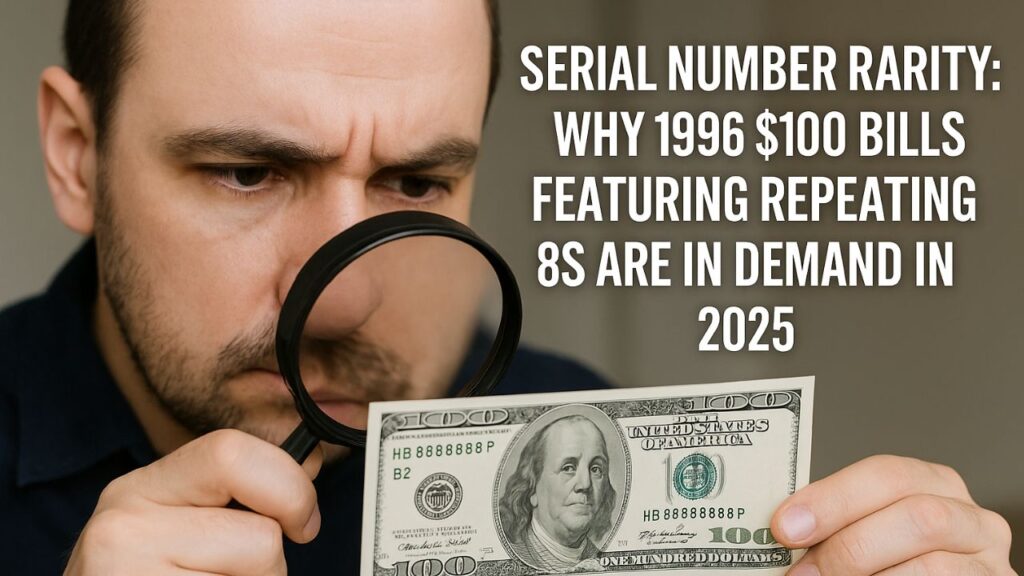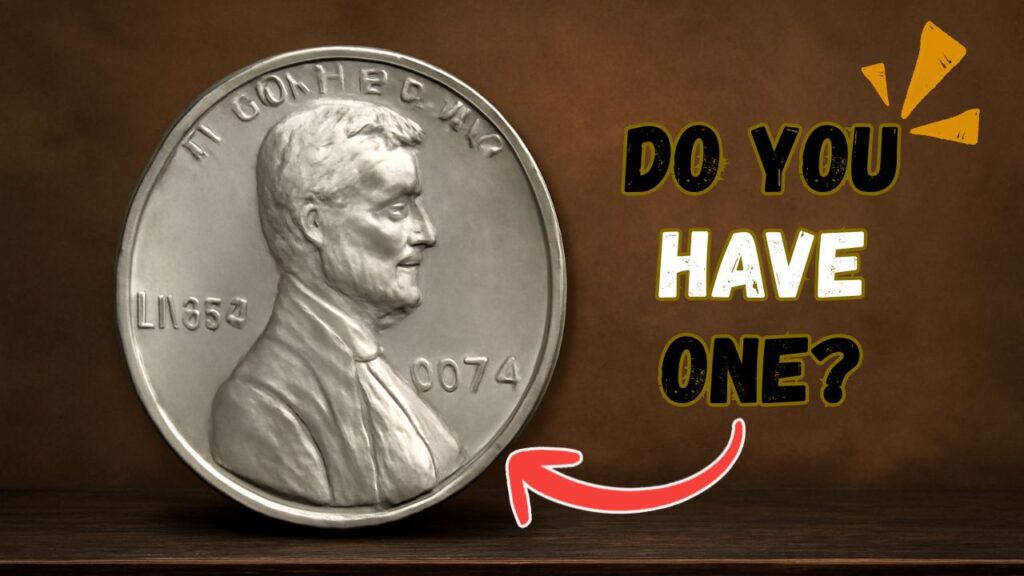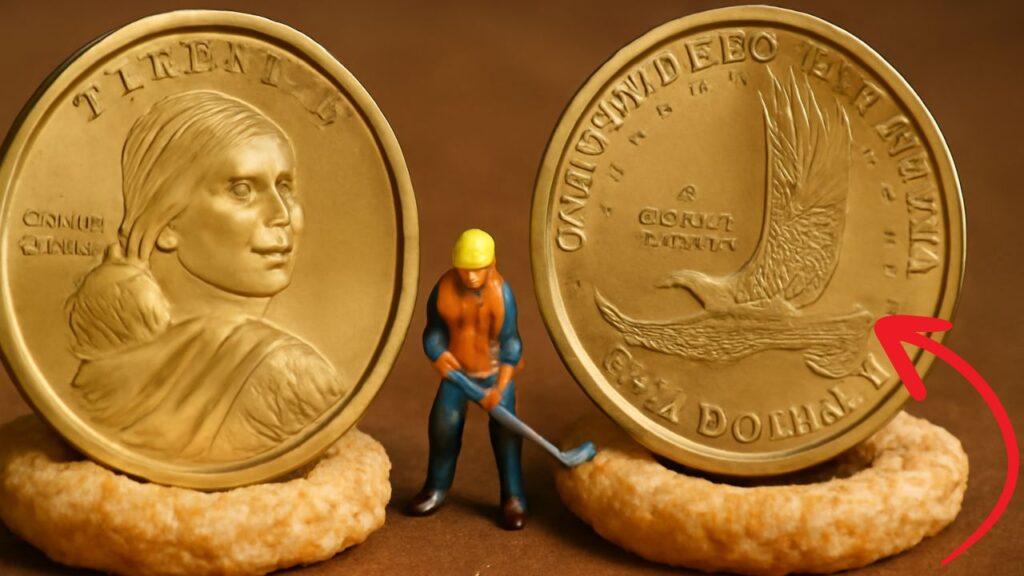In the world of currency collecting, certain serial numbers can transform an ordinary bill into a highly coveted item. Among these, the 1996 $100 Federal Reserve Notes featuring repeating 8s have garnered significant attention in 2025.
Their rarity, coupled with the allure of repeating patterns, has made them a hot commodity among collectors and investors alike.
Understanding Serial Number Variations
Before delving into the specifics of the 1996 $100 bills with repeating 8s, it’s essential to understand the different types of serial numbers that collectors find valuable:
- Repeater Serial Numbers: These consist of two identical four-digit sequences, such as 12341234.
- Radar Serial Numbers: These are palindromic, reading the same forwards and backwards, like 1234321.
- Solid Serial Numbers: Comprising the same digit repeated, such as 88888888.
- Super Repeater Serial Numbers: Featuring a two-digit sequence repeated four times, like 12121212.
- Ladder Serial Numbers: Numbers that ascend or descend in a sequence, such as 12345678 or 87654321.
Among these, the solid serial number 88888888 is particularly rare and highly prized.
The 1996 $100 Bill: A Collector’s Perspective
Series and Design
The 1996 series $100 bill, also known as the Series 1996 Federal Reserve Note, was part of the U.S. government’s redesign of currency to enhance security features. These notes were printed under the signatures of Treasury Secretary Robert E. Rubin and Treasurer of the United States Kathleen B. Withrow.
The design retained the portrait of Benjamin Franklin and the image of Independence Hall, with added security features like a security thread and a watermark.
Serial Number Structure
Each $100 bill has a unique serial number composed of eight digits and a letter prefix. The serial number is printed twice on the front of the bill, once in the upper-left corner and once in the lower-right corner. For example, a bill might have the serial number “AB 12345678 A.”
Why Are Repeating 8s So Valuable?
Rarity
The occurrence of a solid serial number like 88888888 is extremely rare. Given that each bill has a unique serial number, the probability of a specific sequence repeating eight times is minuscule. This rarity makes such bills highly desirable among collectors.
Collector Demand
Collectors are drawn to repeating patterns due to their aesthetic appeal and the challenge of finding them. The 1996 $100 bills with repeating 8s fit this niche perfectly, leading to increased demand in the collector’s market.
Investment Potential
Due to their rarity and demand, these bills have shown potential for appreciation in value. Collectors and investors alike view them as a tangible asset that could yield returns over time.
Market Value in 2025
The value of a 1996 $100 bill with a solid serial number like 88888888 can vary based on its condition and certification. In uncirculated condition, such bills have been known to fetch prices significantly above their face value.
For instance, a similar bill from the 1990 series with a solid serial number sold for approximately $2,000, and when certified, its value increased to over $5,000.
Value Estimates for 1996 $100 Bills with Repeating 8s
| Condition | Estimated Value |
|---|---|
| Circulated | $200 – $500 |
| Uncirculated | $1,000 – $2,000 |
| Certified (MS 63) | $2,500 – $5,000+ |
The 1996 $100 bill featuring a repeating 8 serial number is a rare and valuable collectible in 2025. Its unique serial number, combined with the historical significance of the 1996 series, makes it a sought-after item among collectors and investors.
By understanding how to identify, authenticate, and value these bills, you can appreciate their place in the world of numismatics and potentially capitalize on their increasing demand.
Note: Values are approximate and can vary based on market conditions and specific bill characteristics.
How to Identify and Authenticate
Identification Tips
To identify a 1996 $100 bill with a repeating 8 serial number:
- Examine the Serial Number: Look for a sequence where all eight digits are the same, such as 88888888.
- Check the Condition: Uncirculated bills will have sharp corners, crisp paper, and no folds or creases.
- Verify the Series Year: Ensure the bill is from the 1996 series, which can be found on the front of the bill.
Authentication
To authenticate the bill:
- Professional Grading: Submit the bill to a reputable currency grading service, such as the Professional Currency Grading Service (PCGS) or the Bureau of Engraving and Printing (BEP), for certification.
- Security Features: Check for security features like the security thread and watermark to confirm authenticity.
Frequently Asked Questions
1. Are all 1996 $100 bills with repeating 8s valuable?
Not all 1996 $100 bills with repeating 8s are equally valuable. The value depends on factors like the condition of the bill, whether it is uncirculated, and if it has been professionally graded.
2. How can I sell my 1996 $100 bill with a repeating 8 serial number?
You can sell your bill through online marketplaces like eBay, specialized currency auction sites, or by contacting professional currency dealers.
3. Can the value of my bill increase over time?
Yes, the value of rare currency can appreciate over time, especially if it is well-preserved and in high demand among collectors.



